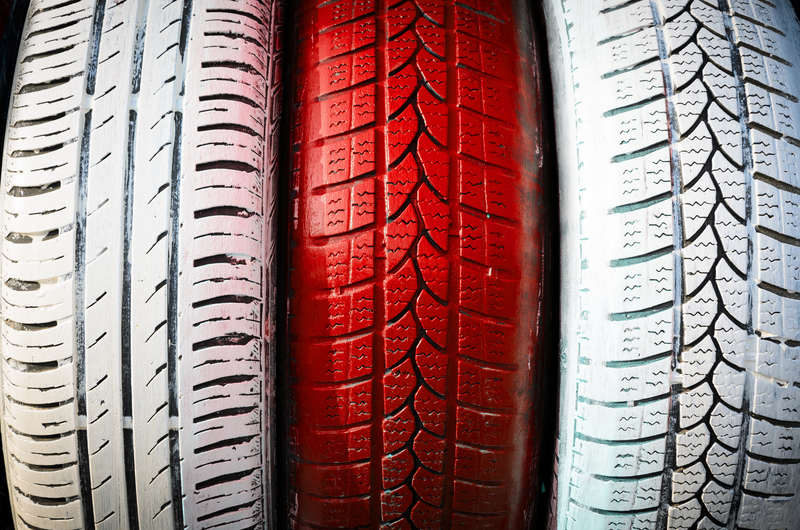Breathe New Life into Style: Smart Clothes Recycling Solutions
Posted on 14/10/2025
Breathe New Life into Style: Smart Clothes Recycling Solutions
In the fast-paced world of fashion, trends change in the blink of an eye, leading to overflowing closets and a mounting pile of discarded garments. Sustainable fashion practices are no longer just a buzzword; they are a necessity for the health of our planet. Fortunately, with innovative clothes recycling solutions, there's a golden opportunity to breathe new life into style--transforming yesterday's outfits into tomorrow's treasures. This comprehensive guide delves into smart clothes recycling techniques and trends, offering actionable steps for conscious consumers and industry leaders alike.
Why Clothing Recycling Matters More Than Ever
Globally, the fashion industry is one of the top polluting sectors. The constant cycle of buying and discarding clothes strains the environment at every level--from textile production to landfill waste. According to the Environmental Protection Agency (EPA), over 11 million tons of textile waste end up in landfills each year in the US alone. Clothes recycling solutions can help mitigate pollution, conserve resources, and reduce the carbon footprint of fashion. By learning how to recycle and repurpose clothing smartly, we empower ourselves to make a positive impact--all while maintaining a unique sense of style.
Major Environmental Benefits of Clothes Recycling
- Reducing Landfill Waste: Recycling clothes diverts millions of tons of fabric from overcrowded landfills.
- Conserving Resources: It requires far fewer resources--water, energy, chemicals--compared to producing new textiles.
- Cutting Down Greenhouse Gases: Fewer clothes in landfills mean less methane emission, a potent greenhouse gas.
- Promoting Circular Fashion: Smart recycling fosters a circular economy, keeping materials in use longer.

Smart Clothing Recycling Solutions: Key Innovations & Strategies
The future of smart clothing recycling lies in innovative approaches that consider the full lifecycle of garments, from production to second lives. Let's explore leading-edge solutions and how you can be part of this stylish revolution.
1. Textile-to-Textile Recycling Technologies
Textile-to-textile recycling entails breaking down old garments into fibers and reprocessing them into new fabrics. Advanced techniques, like mechanical and chemical recycling, can process textiles with mixed fiber content, a game-changer for the fashion industry.
- Mechanical Recycling: Clothes are shredded into fibers, cleaned, and spun into new yarn. This method works best for pure cotton or wool garments.
- Chemical Recycling: Uses solvents or enzymes to separate and dissolve textile blends, producing high-quality regenerated fibers like recycled polyester or lyocell.
Major brands are investing in these closed-loop systems, ensuring that textiles never go to waste but instead are continuously reborn.
2. Upcycling and Creative Repurposing
Upcycling is an ingenious way to breathe new life into clothes by transforming them into higher-value items. Whether it's turning old jeans into a trendy tote or patching together t-shirts for a colorful quilt, creative repurposing is limited only by imagination.
- DIY Projects: Embellish, crop, or combine outdated pieces for unique looks.
- Designer Upcycling: Many contemporary designers craft bespoke items from garment remnants, giving style an eco-conscious edge.
Besides reducing waste, upcycling cultivates individuality--your wardrobe becomes a canvas for self-expression.
3. Clothing Collection and Take-back Programs
More brands and retailers are launching garment collection schemes, inviting consumers to drop off unwanted clothes for recycling or resale. Some offer vouchers or discounts as incentives.
- Retail Initiatives: H&M, Zara, and Levi's lead with in-store collection bins and product recycling commitments.
- Community Drives: Local events and non-profits gather gently used clothes for redistribution or recycling.
These programs make recycling accessible and rewarding, fostering a culture of responsible consumption.
4. Resale and Consignment Platforms
Digital marketplaces have revolutionized pre-loved fashion. Platforms like Depop, ThredUp, and Poshmark let users buy and sell secondhand clothing conveniently and securely.
- Income Opportunity: Earn money and clear closet space while keeping fashion in circulation.
- Expanding Choices: Shoppers access unique, vintage, or designer pieces at a fraction of the price.
- Community Vibes: These peer-to-peer sites foster a sense of belonging and sustainable style advocacy.
By supporting resale, you actively participate in the circular fashion movement, extending a garment's lifecycle while reducing demand for new items.
5. Clothing Swaps and Sharing Economies
Why let clothes gather dust when they can spark joy for someone else? Clothing swaps--both in-person events and online communities--are smart, social ways to refresh your wardrobe.
- Local Swaps: Host a swap party with friends or neighbors, exchanging gently used garments.
- Digital Clothing Libraries: Borrow or rent fashion for special occasions, reducing single-use purchases.
Through sharing, we gain variety, reduce environmental impact, and foster new connections. It's fashion with a conscience.
The Role of Technology in Modern Clothes Recycling
Emerging technologies are pushing the boundaries of what's possible in the field of smart garment recycling. Here's how tech is transforming the sector:
- RFID Tracking: Enables accurate sorting of clothing by fiber content, which boosts recycling efficiency.
- AI-powered Sorting: Uses image recognition to identify textile types and direct them to appropriate recycling streams.
- Blockchain: Enhances transparency, helping consumers trace the journey of recycled fibers from old to new.
- Smart Design: Designers use modular patterns and mono-materials for easier disassembly and recycling at end-of-life.
Adopting cutting-edge technology ensures that sustainable practices don't compromise on quality or aesthetics, making smart clothes recycling more accessible and effective.
How You Can Contribute: Smart Steps for Responsible Consumers
Adopt a "Breathe New Life Into Style" Mindset
Everyone plays a part in the fashion ecosystem. Here's how you can champion smart clothing recycling solutions in your everyday life:
- Buy Thoughtfully: Choose quality over quantity--items that will last longer and withstand multiple uses and washes.
- Care for Clothing: Wash clothes less often, at lower temperatures, and repair damage early to extend lifespan.
- Recycle Responsibly: Donate, resell, or upcycle before discarding. Research local textile recycling facilities or brand take-back programs.
- Educate and Advocate: Inspire others by sharing knowledge about smart recycling and sustainable fashion.
Every action matters. When we combine efforts at individual, community, and industry levels, we create a seismic shift towards sustainable style.
Get Creative: DIY Upcycling Ideas
- Turn worn-out shirts into stylish tote bags or cushion covers.
- Patch, dye, or embroider jeans for a trendy, personalized look.
- Cut sweaters into mittens or cozy beanies for winter warmth.
- Collaborate with local artists to repurpose fabric scraps into wall art or jewelry.
Remember: Your closet is a treasure trove of potential--give your clothes a second life rather than a one-way ticket to the landfill.
Leading Brands and Programs in Smart Clothes Recycling
Many fashion giants and innovative startups are spearheading efforts to revolutionize clothing recycling. Here are a few making significant impact:
- Patagonia: Their Worn Wear program repairs, resells, and recycles outdoor apparel, keeping quality gear in motion for years.
- PANGAIA: Focuses on materials created from recycled fibers and bio-based sources, embracing closed-loop production.
- Renewcell: Uses patented Circulose(R) technology to turn old cotton textiles into pulp for brand-new clothes.
- The Renewal Workshop: Restores unsellable items for leading brands, offering "renewed" products to consumers at lower costs.
- Textile Exchange: Advocates for industry-wide sustainable practices, including smart textile recycling solutions.
Supporting brands and organizations at the forefront of recycling innovation magnifies your own contribution to a cleaner, more responsible fashion ecosystem.

The Future of Fashion: Circularity and Conscious Consumerism
Towards a Truly Circular Fashion Economy
True circular fashion means designing products with their end-of-life in mind, ensuring easy recycling and material recovery. Technologies like fiber identification, modular garment construction, and AI-optimized supply chains are paving the way for a future where fashion waste is an afterthought.
- Mono-material Garments: Made from a single type of fiber, making them easy to recycle.
- Design for Disassembly: Clothes created for simple deconstruction and material separation.
Through collective action, smart clothes recycling solutions can shift the industry from a linear "take-make-dispose" model to a circular system where materials live on indefinitely.
Empowering Communities & Creating Jobs
A robust recycling sector doesn't just protect the planet; it also creates local employment. From collection centers to upcycling workshops, there is enormous potential to foster green jobs and support underserved communities through inclusive recycling programs.
Conclusion: Fashion's New Breath of Life
Every garment has a story that doesn't have to end at the back of your closet--or in the landfill. With smart recycling solutions, we can breathe new life into style and simultaneously preserve the planet. Whether you're an eco-conscious consumer, a design enthusiast, or a business innovator, it's time to embrace circular fashion and make clothes recycling part of your daily routine.
What will your next style story be? Remember, smart clothing recycling is not just a trend--it's the future of fashion. Join the movement to turn yesterday's favorites into tomorrow's wardrobe heroes and keep style (and sustainability) alive for generations to come.




